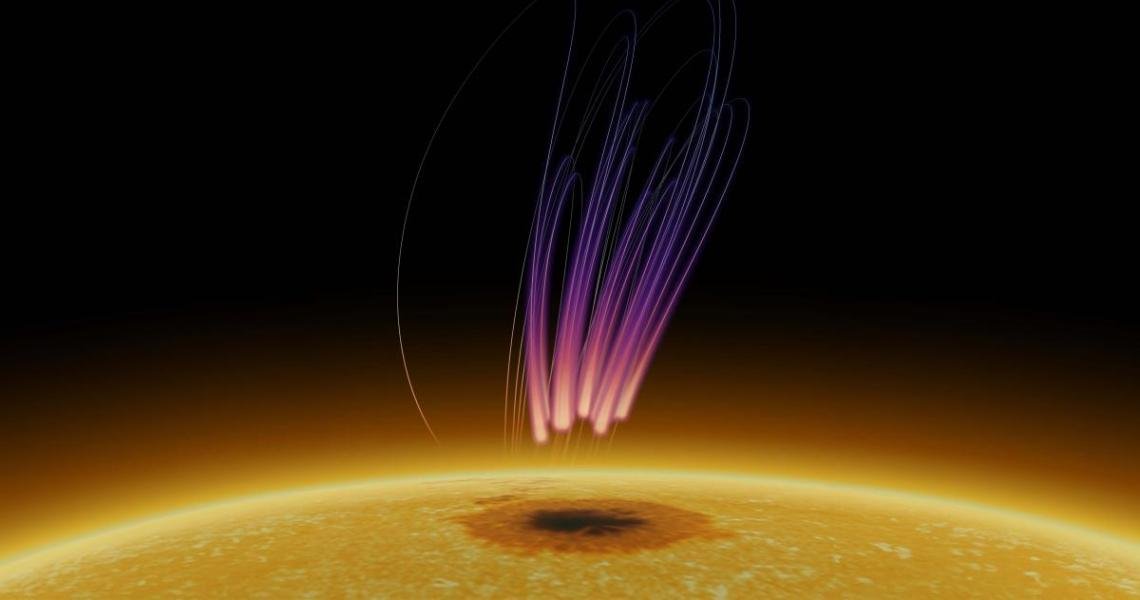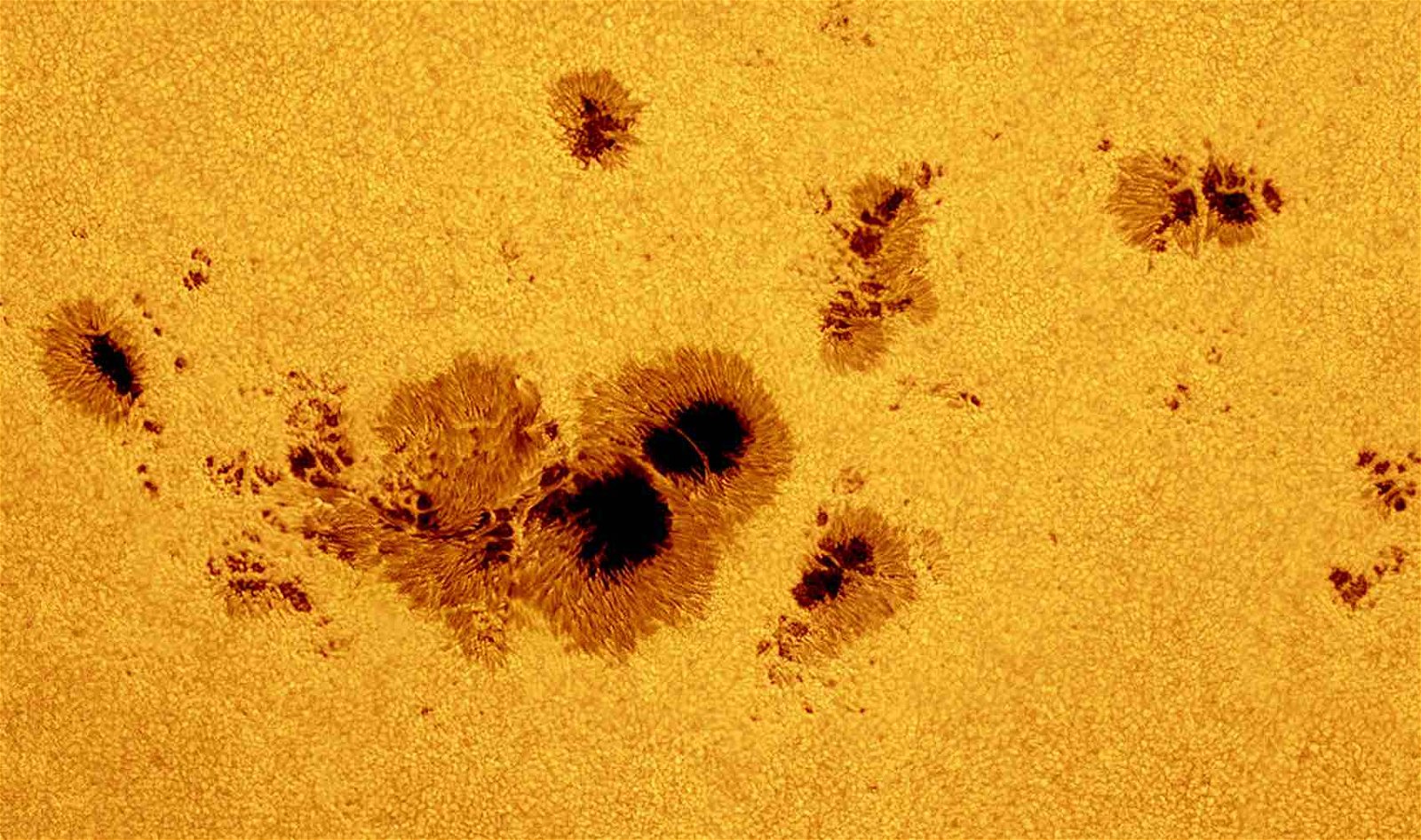For more than a week, a team of astronomers watched something unusual after it appeared nearly 25,000 miles above a dark patch on the surface of the Sun.
The phenomenon, detected by astronomers with the New Jersey Institute of Technology’s Center for Solar-Terrestrial Research (NJIT-CSTR), resembled the ghostly glow of the aurora borealis, the colorful emissions that appear in the night sky close to the Earth’s magnetic poles.
“We’ve detected a peculiar type of long-lasting polarized radio bursts emanating from a sunspot, persisting for over a week,” according to NJIT-CSTR scientist Sijie Yu, who said the eerie emissions were “quite unlike the typical, transient solar radio bursts typically lasting minutes or hours.”
Yu and his colleagues published their findings in a new study, of which he is the lead author, which details their radio observations of the remarkable auroral display.


Along with the auroras seen on Earth, emissions similar to those Yu and the NJIT-CSTR team observed have also been spotted by astronomers on planets like Jupiter and Saturn. In some instances, evidence of aurora-like emissions has also been detected around distant celestial objects like stars, especially those possessing low mass.
“It’s an exciting discovery that has the potential to alter our comprehension of stellar magnetic processes,” Yu said in a statement.
Specifically, the team believes that clues to the origin of solar radio bursts could be revealed thanks to the unusual discovery, which also may help astronomers better understand and characterize similar phenomena that occur around dark patches on the surface of distant stars, particularly brown dwarfs, which are similar to the sunspots we observe on our own nearest star.
These aurora-like emissions result from energetic electrons appearing in areas where magnetic fields converge close to the poles of planets.
While the radio emissions observed recently over the Sun were less intense than those observed emanating from other stars, they are similar enough that they suggest a common mechanism behind their origin, sharing characteristics that include a high degree of brightness, as well as a broad range of frequencies, and strong circular polarization.
In their analysis, Yu and the team found that these unique radio bursts probably result from what is known as electron cyclotron maser emission, which occurs as energetic electrons become accelerated by solar flares produced from the surface of a star and interact with its magnetic field.
“The source morphology and frequency dispersion are consistent with electron cyclotron maser emission,” the team writes in their recent paper, “due to precipitating energetic electrons produced by recurring nearby flares.”
Yu and the team report that features they observed in relation to these bursts, which they say include their shape and changes in their frequency, support their conclusions, which they hope may help advance our overall knowledge about solar radio bursts.
“Our findings offer new insights into the origin of such intense solar radio bursts,” the team writes, “and may provide an alternative explanation for aurora-like radio emissions on other flare stars with large starspots.”
The team’s paper, “Detection of long-lasting aurora-like radio emission above a sunspot,” appeared in the journal Nature Astronomy on November 13, 2023.
Micah Hanks is the Editor-in-Chief and Co-Founder of The Debrief. He can be reached by email at micah@thedebrief.org. Follow his work at micahhanks.com and on Twitter: @MicahHanks.

